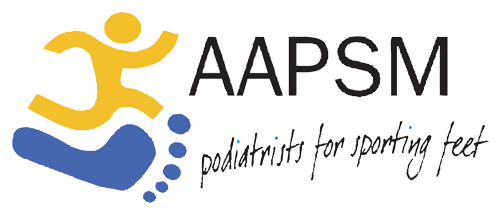Gold Coast Kokoda Challenge Blister Prevention
With the 96 Km Kokoda Challenge on the Gold Coast coming up soon it is paramount that you get your blisters under control. The following is a guide on what blisters are and the best way to prevent them.
What causes blisters?
A simple test to start with. Place your right index finger on the back of your left hand. Keeping it stuck to same bit of skin, wobble your finger back and forth. This is shear. This is what causes blisters. Friction is what holds your index finger in the same position. It is the rubbing of the skin on the underlying structures, rather than on top of the skin that causes the blister. This rubbing causes tears in deeper layers of the skin called an intra-epidermal split, which fill with fluid within around 2 hours. Irritation on the surface of the skin then adds abrasion to the injury.
There are a number of factors that cause blisters including:
- Skin type
- High friction and pressure
- Bone movement
- Repetitiveness
Why on our feet?
Rather than just one event leading to an increase in blisters on your feet compared to anywhere else, there are a few aspects that combine to create a ‘perfect’ environment for blister formation. Firstly, the skin on the bottom of your feet is thicker and less mobile. Less mobile skin means an increased amount of shear. Secondly, the environment around your foot is hot and humid. This is due to a high density of sweat glands in your feet, combined with the fact that your feet are generally wrapped up in socks and shoes, trapping moisture. Thirdly, unlike anywhere else in the body, you experience high weight-bearing pressures through your feet. As mentioned above, increase pressure leads to increased blister formation. Lastly, the repetitive nature of trail walking/running creates recurring shear and pressure in the same area over and over again until a blister forms.
Prevention
Preventing blisters requires a multifactorial approach, and there is certainly no one size fits all method.
Shoes
Length: the length of the shoe should allow around a thumbs width in between the end of your longest toe and the end of the shoe. You should keep in mind that particularly during longer walks and runs that your foot will swell. Your foot may also slip forward in the shoe, especially during downhill periods, so allowing a small amount of room at the front of your shoe is paramount.
Width: When your foot is in your shoe with the laces done up comfortably, your foot should not be bulging over the sides of the shoe. Similarly, there should be no bunching of the upper of your shoe. You should be able to just pinch a small amount of the upper.
Ability to adjust: having the ability to loosen/tighten your shoes is very important. For this reason slip on shoes are not ideal. Shoes with laces are most appropriate. Lock lacing is a lacing technique, which is particularly helping in prevent heel slippage.
Socks
In the blister world, socks can either be a hindrance or your biggest ally. Moisture wicking socks are certainly the way to go, as higher moisture equates to higher friction. Cotton socks are most likely the worst socks you can wear due to their predisposition to trap moisture within. Acrylic and polyester fibres are most commonly used in moisture wicking socks, as they have the ability to move moisture away from your foot; although, the viability of this also depends on the breathability of your shoes. A nice breathable upper is most preferable. Waterproofing and Gortex lined shoes may reduce breathability. It may be difficult to find a happy medium in trail walking and running, as we want to do everything we can to keep moisture out of our shoes, but also want to allow moisture to escape. Having a couple of spare pairs of socks and even a spare pair of shoes for river crossings may be ideal.
Some technical socks are also available in an anatomical fit, ie there is a left and right sock. This will improve the fit of your sock and reduce movement. In combination with this, socks with less seams or seamless will be most beneficial.
Wearing 2 pairs of socks has also been shown to reduce friction. The idea is to wear 2 pairs of socks that are slightly different from one another in their material. Similarly, toe socks may also prove beneficial, particularly if you have difficulties with blisters in between your toes.
Cushioning
It is thought that cushioning insoles may help with blisters on the plantar (bottom) surface of your foot by dispersing plantar pressures.
Cushioned insoles also have the ability to absorb shear, so your skin doesn’t undergo the same shearing strain. Having said this, there is limited research in the area.
Orthoses
Depending upon area of irritation, orthoses and padding can be added to shoes to alter mechanics to offload certain area For example, you may have a particularly supinated foot type and might be getting lateral forefoot blisters. In this case an orthotic / padding may be added to pronate the foot and offload the area in question. Another example may be that you have a rather prominent 1st metatarsal head, with a large amount of pressure going through this area. Once again, padding can be added to reduce the pressure under the 1st metatarsal head.
Skin
Your skin has an incredible ability to adapt to certain stressors. Over time your skin can become resistant to frictional forces and particular layers of the skin even become thicker. Adaptation occurs from spending more time in the shoes you plan on wearing and increased amount of training in the your particular activity, in this case trail walking/ running. Calluses are also the bodies natural response to prolonged pressure, although despite what you may think, do nothing to impede the formation of blisters.
Skin drying is another popular technique. Applicants like antiperspirants, and powders are commonly applied to reduce moisture on the foot. Antiperspirants attempt to prevent the skin from sweating, although at foot level are relatively ineffective. If there is any benefit from this technique, it is only very short term. Powders such as talcum powder are also thought to provide some relief by absorbing any access moisture. Frequent application is needed in this case, as too much as once can increase chances of blistering. Similar to antiperspirants, there is only a small amount of benefit from this practice. As previously discussed, moisture wicking socks are the best method for keeping your feet dry.
Lubricants can be hit and miss. Some can be helpful in the short term, while others such as moisturisers and less greasy lubricants can actually increase friction. Viscous, greasier lubricants do have the ability to reduce blisters, but only for around 60-90 mins after application, after this timeframe friction can increase. Targeted application is best, as excessive and unnecessary application can be messy and increase blistering by occluding the skin and not allowing it to breath. From this your skin can weaken (think of your skin if you’ve been in the bath too long) and be more susceptible to breakdown. Popular choice Vaseline is not ideal as it can attract grit and become messy.
Taping
There has been very little research on taping to prevent blisters, although it is a widely practiced technique with mixed results. It certainly has the ability to prevent blistering if applied properly. The tape should stick on skin well with no creases that may cause irritation. It should also be applied at least at hour before the event to allow time for it to stick on the skin’s surface. Blister prevention patches can also be effective in reducing friction.
If you have any further questions or would like to book it to see one of our podiatrist at Gold Coast Foot Centres please visit our website www.goldcoastfootcentres.com and book in at your most convenient clinic.




